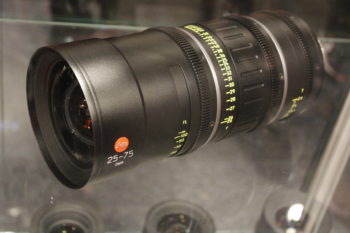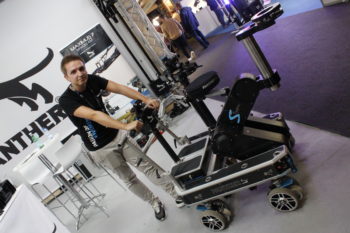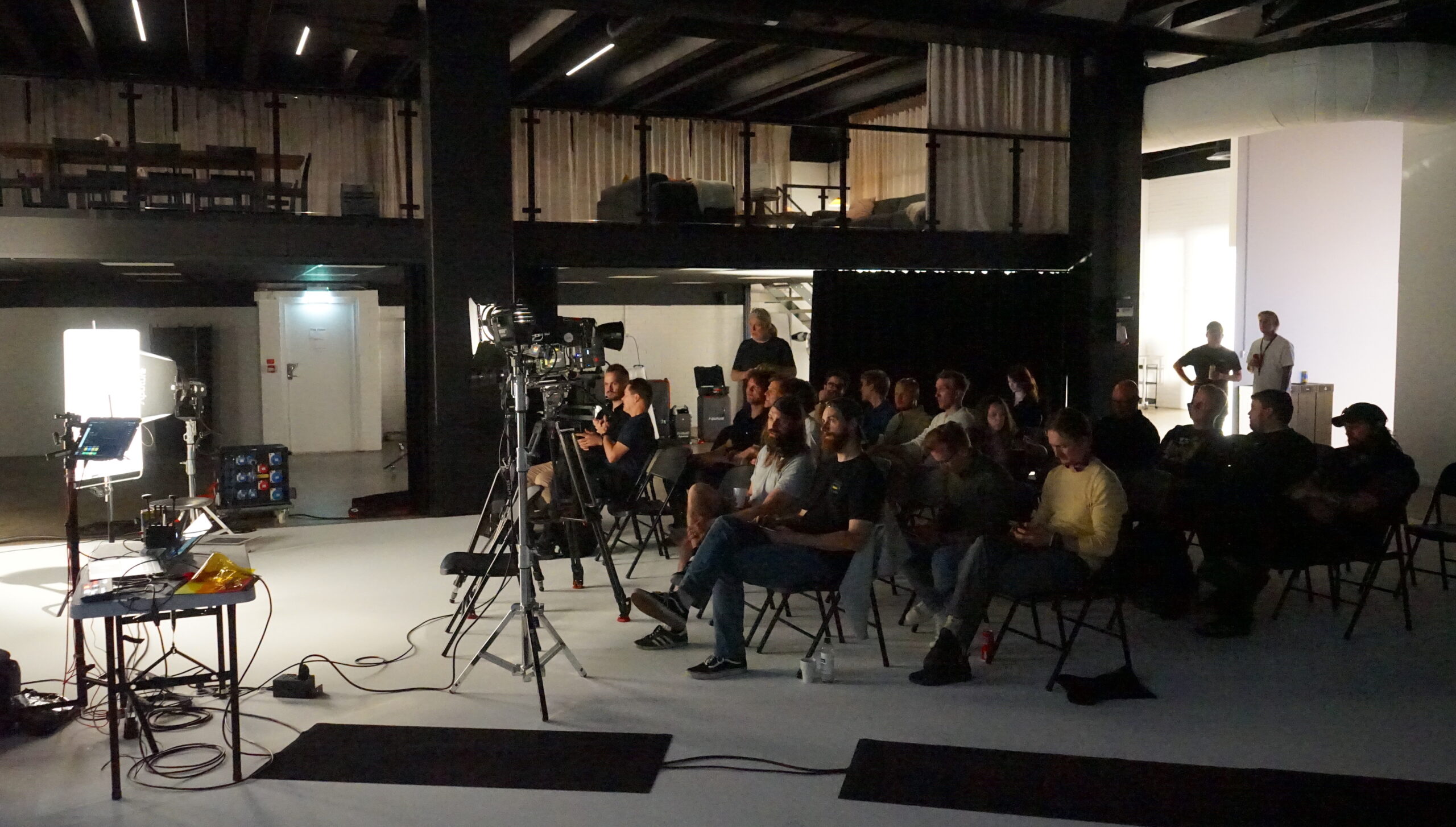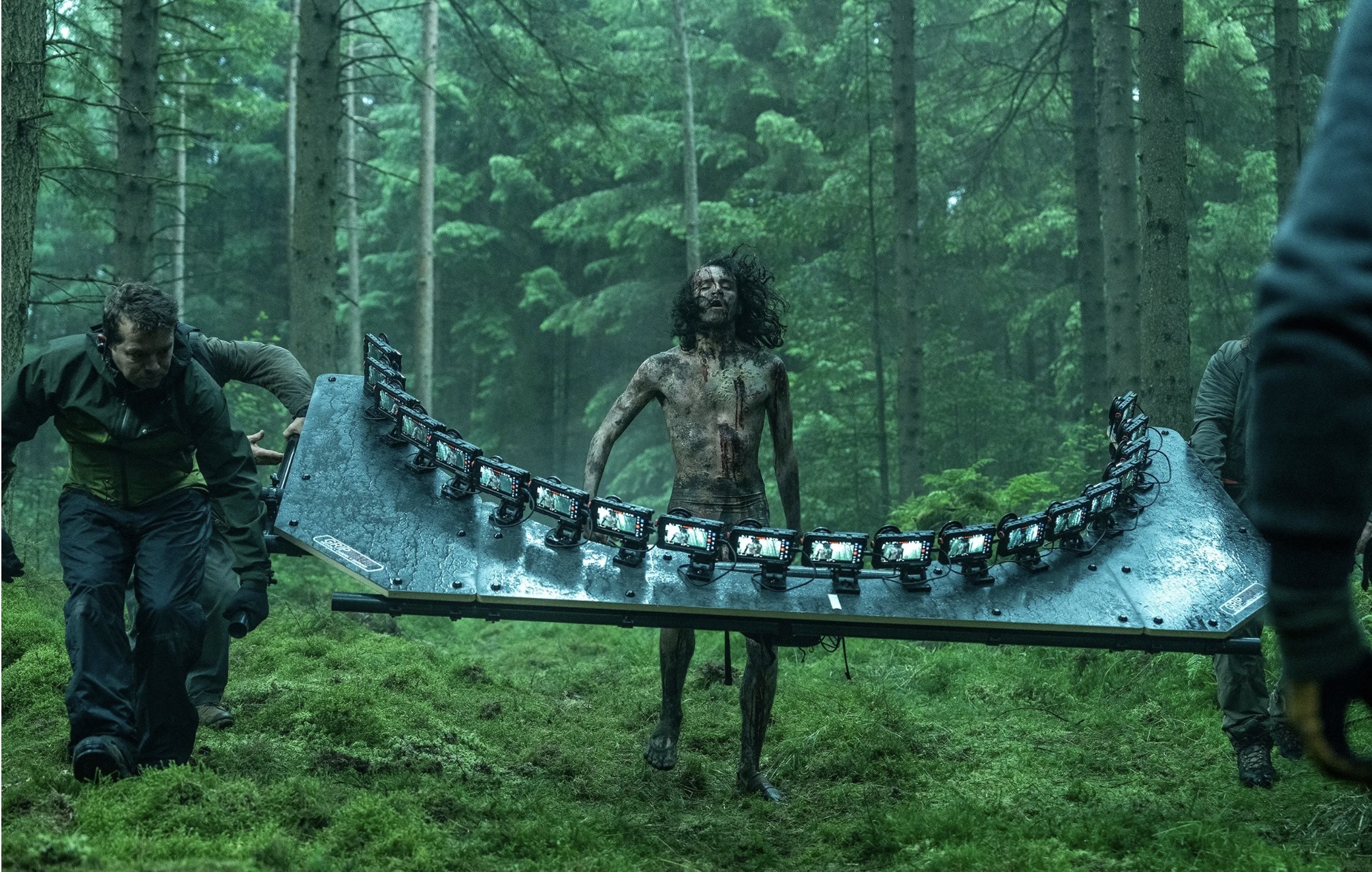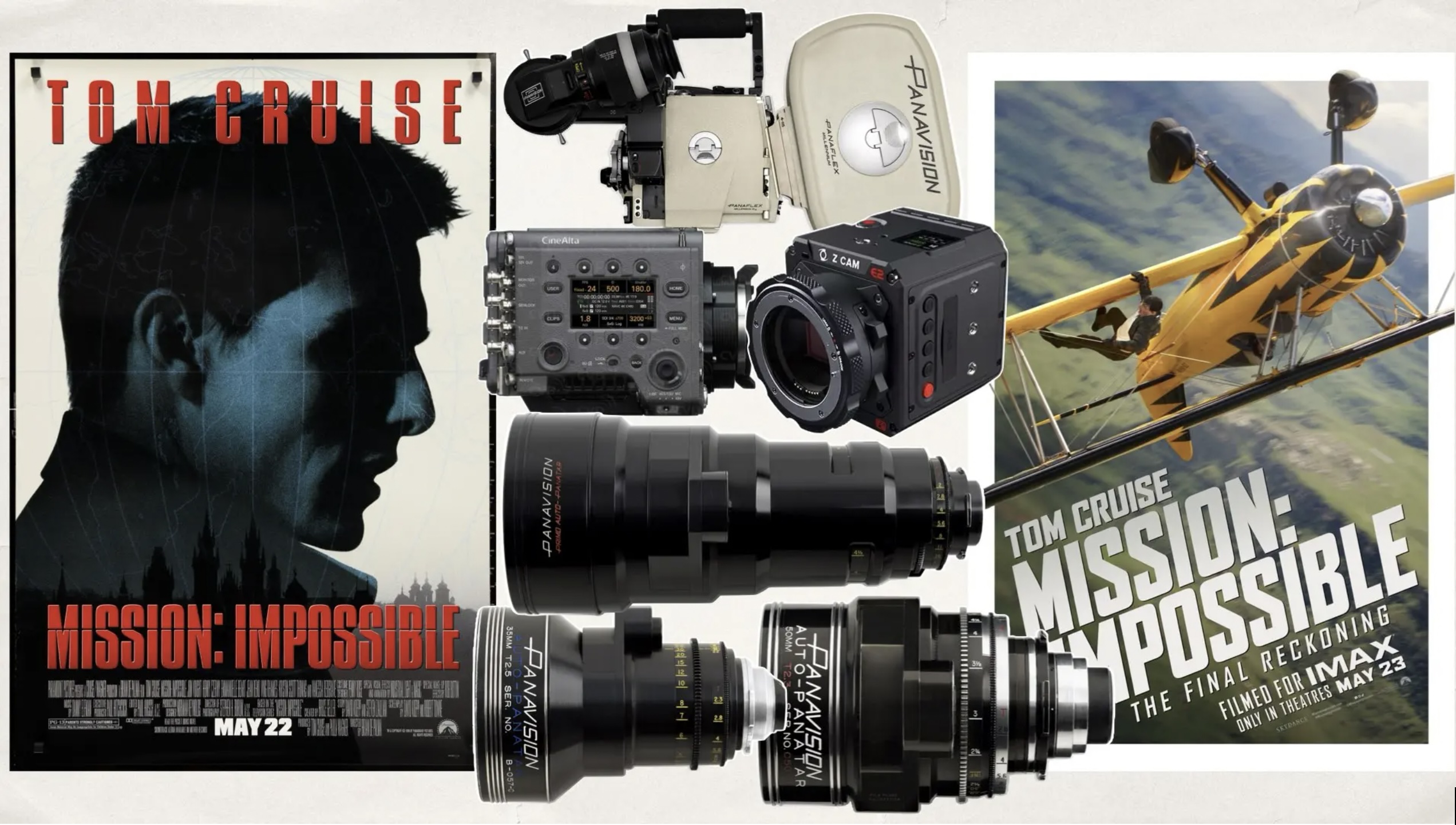Report: IBC 2018

The IMAGO Technical Committee meet Canon’s representatives. From left to right: Philippe Ros, AFC/IMAGO, Vincent Heligon, Canon France, Benoit Mercier, Canon France, Alex Lindén, FSF/IMAGO.
Between the 13th and 18th of September at the IBC in Amsterdam, the leading manufacturers from all corners of the world of equipment and software for the broadcast industry, as well as the audiovisual industry in general, all gathered for a hectic week of demonstrating their latest products. The FSF sent out Alex Lindén and myself to cover this event. Since Alex is also a member of the IMAGO technical committee, our agendas were not synchronized and we didn’t arrive in Amsterdam at the same time.
My hotel turned out to be venerable and quite charming, situated in the old part of town and surrounded by canals and bridges. There was a lot of commotion outside my hotel room window, and it wasn’t until then that that it struck me I had arrived here on a Friday night!
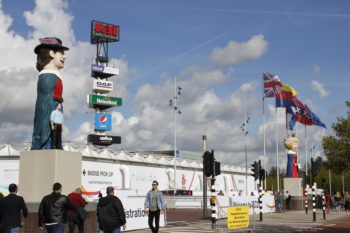 Be that as it may, the next morning I was strolling through the enormous exhibition halls of this year’s edition of the largest media, entertainment and technology exhibition in Europe. So what trends in cinematography can one observe here? Well, lenses designed to cover large format are still a dominant theme, along with cameras with large enough sensors to accommodate them. Gear to allow every conceivable way of camera movement through three-dimensional space is also abundant at the exhibition. But beyond that, no discernible new trend. And perhaps this means something, perhaps the industry is gathering momentum before the next major trend makes itself known? Time will tell.
Be that as it may, the next morning I was strolling through the enormous exhibition halls of this year’s edition of the largest media, entertainment and technology exhibition in Europe. So what trends in cinematography can one observe here? Well, lenses designed to cover large format are still a dominant theme, along with cameras with large enough sensors to accommodate them. Gear to allow every conceivable way of camera movement through three-dimensional space is also abundant at the exhibition. But beyond that, no discernible new trend. And perhaps this means something, perhaps the industry is gathering momentum before the next major trend makes itself known? Time will tell.
The stuff of most interest to cinematographers is to be found in exhibition halls number 10, 11 and 12, and here Panasonic have an immense booth where Peter Kroopp kindly takes time out of his busy schedule to talk about the current situation for the Panasonic Varicam cameras right now. Varicam 35 is doing very well indeed it turns out, as it is on the extremely short list of production cameras that Netflix approves of for their original programming. The fact that Netflix have chosen Varicam 35 for several of their productions has given favourable publicity to the Panasonic high-end cameras in general, and helped boost sales.
I recognize a lot of familiar faces while strolling around among the booths, but then again the IBC is the largest event of its kind in Europe -lots of deals are being made here, and all the rental houses want the latest equipment, so sometimes it’s almost a question of buying first and then asking “what did I just buy?”
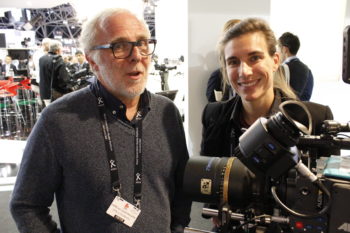
Louis-Philippe Capelle, IMAGO, and Anna Piffl, the manager of P+S Technik, with the Technovision 100 mm anamorphic lense.
At the P+S Technik Booth I happen to run into Louis-Philippe Capelle from IMAGO, who informs me that P+S Technik -who since 2012 have been known primarily for rehousing lenses- are unveiling at the IBC no less than two brand new series of lenses inspired by classic lens design! They are offering a series of 1,5 * anamorphic lenses inspired by the classic Technovision anamorphics, which gave films like ”Apocalypse Now” (1979) their unforgettable look. And these new T2,8 P+S Technik Technovision lenses cover large format, enabling you to shoot anamorphic with the Alexa LF! The other new set of lenses they offer are inspired by the classic Kowa lenses, cover the super 35 format and are therefore suitable for cameras like the Alexa mini.
While we are on the subject of lenses for large format cinematography, Angénieux are unveiling at the IBC a brand-new Optimo zoom lens of magnificent proportions! Jean-Yves Le Poulain, technical and artistic advicer Cinema/TV product line for Thales Angénieux, gives us a thorough demonstration of it. Those who see this lens for the first time at the IBC and wish to buy one will have to wait almost a year for delivery, such is the demand at this point. This is actually three zoom lenses in one(!) as the lens can easily be rebuilt -on set even, providing you have a clean enough room- from a T 2,8 super 35 24-290 mm to a T 3,2 ’Open Gate’ 26-320 mm and finally to a T 4,2 ’Full Frame/Vistavision’ 36-435mm zoom, thus covering three different size sensors. This is of course wonderful news for rental houses, as they only need to store one lens which can be employed in three different shooting situations. As the lens has a resolution of 200 line pairs per millimeter, it’s maximum resolution is actually 16K, which is way beyond what any digital camera can handle today, making this zoom lens comfortably future-proof.
Leitz are also presenting a brand-new series of Vistavision lenses here at the IBC: in fact no less than twelve T1,8 prime lenses and two T2,8 zooms. I mentioned my thoughts on ”no discernible trend” earlier in this article, and as Tommaso Vergallo from Leitz kindly gives me a demonstration of the new lenses, I’m thinking the Leitz approach may be the answer to the absence of clear new direction in the marketplace. Because, as Tommaso explains to me, Leitz have chosen to unveil all these 14 lenses at once, rather than a few at the IBC, a few more at the BSC Expo and the NAB, etc. And the reason for this is to provide the marketplace with a clear ”roadmap” of where Leitz are heading in terms of products, because you can order these lenses today, but delivery will be in 2019/2020 depending on what focal lengths we’re talking about. Each lens has a price tag of approximately €40 000 and physical dimensions are consistent throughout the range, making the interaction with matte boxes etc quicker.
German dolly manufacturer Panther have strategically placed their booth at the entrance of Hall 12, and you can’t miss the fact that they have a fascinating new dolly which actually had it’s world premiere here at the IBC on September 14th! Christopher Schuller, from Panther, kindly gives me a demonstration and explains: ”normally we only make column dollies, but many users like scissors-dollies, so we decided to manufacture our own scissors-dolly and at the same time to improve on the functionality of this kind of dolly. So among its advantages is that you can take it apart, if the crew for instance have to carry it up several flights of stairs, and also the arm has both positive and negative range, enabling you to move your camera a maximum of 146 centimeters up and down”. The dolly comes with a wireless handset so the scissors-arm can be remotely controlled. Price tag, if you buy the complete package, is €110 000.
Roaming around in Hall 12, a Swedish flag in the distance catches my eye! It’s the Easyrig booth and when I approach it Anna Berggren demonstrates the new vest especially designed for female users, and also points to two clever new additions to the product range: an umbrella to protect the user from rain and also a quick release mount, so you can instantly detach the camera from your Easyrig if you should desire to do so. But beyond these new products, it turns out the company is celebrating it’s 25th year in business! Proud founder Johan Hellsten has actually sold over 10 000 units during this quarter-century, alleviating an enormous amount of back pain for countless cinematographers in the process -talk about win-win! Johan has actually written a book, “the story of Easyrig”, which is also available at the booth, in which he recounts the fascinating journey from initial invention to well known brand with a worldwide following.

Jonas Elmqvist from BB&S demonstrates a gaffer’s control from Spots Unlimited. The brick wall behind him (no it’s not real) is actually also one of the products Jonas represents!
Lars Pettersson




